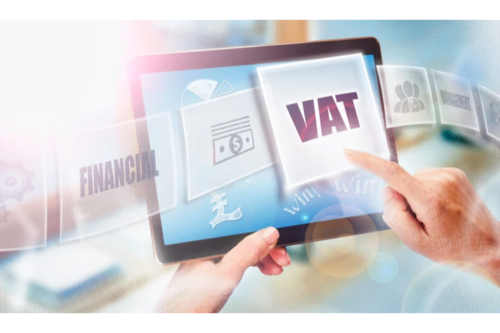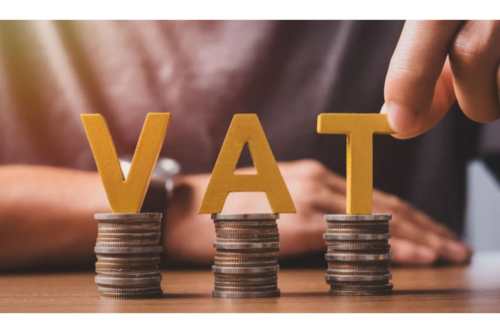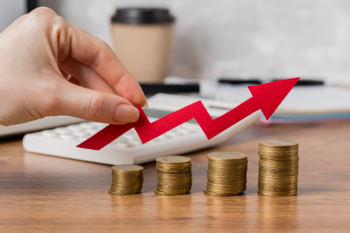How Much Is VAT in UK? 2025 Guide
Aug 2025
| TL;DR / Key Takeaways | |||
|---|---|---|---|
| The standard VAT rate in the UK is 20% on most goods and services. | |||
| You must register for VAT if your taxable turnover exceeds £90,000. | |||
| VAT returns are submitted quarterly to HM Revenue & Customs (HMRC). | |||
| Reduced and zero rates apply to specific items like energy, books, and food. | |||
| All VAT-registered businesses must comply with Making Tax Digital (MTD). | |||
Ever looked at your receipt and wondered what portion of the price goes to tax? That’s Value Added Tax (VAT), a key part of the UK’s tax system that affects everything from your weekly shop to large-scale business transactions.
Whether you're a new entrepreneur, a freelancer, or running an established company, understanding how much VAT is in the UK and when you need to register is essential. From the standard 20% rate to reduced and zero-rated items, and the digital filing rules under Making Tax Digital, this guide breaks it all down so you can manage VAT confidently and compliantly.
What Is VAT And How Does It Work In The UK?
VAT, or Value Added Tax, is a type of indirect tax levied on the sale of goods and services in the United Kingdom. It’s a consumption tax added at each stage of the supply chain, from production to the final sale. Introduced in 1973, VAT has since become one of the most important revenue sources for the UK government.
VAT applies to most transactions unless the item is zero-rated, exempt, or qualifies for a reduced rate. Businesses charge VAT on sales (output tax) and reclaim VAT paid on purchases (input tax).
Thinking of registering your digital or tech startup for VAT? Check out our guide on how to register your tech startup for VAT.
What Are The Different VAT Rates In The UK?
As of 2025, the UK applies three main rates of VAT. Each VAT rate in UK depends on the nature of the goods or services provided. These are governed and updated by HM Revenue & Customs (HMRC) and typically reviewed each tax year.
1. Standard VAT Rate – 20%
The standard rate of VAT in the UK is 20%, which applies to the majority of goods and services sold within the country. This includes items such as:
- Electronics
- Furniture
- Clothing (excluding children’s sizes)
- Consultancy services
- Digital services (e.g., streaming platforms, downloadable software, e-learning subscriptions)
- Most professional services
This standard VAT rate has remained unchanged since 2011 and is the default rate unless goods or services fall under a specific exemption or reduced rate.
2. Reduced VAT Rate – 5%
The reduced rate of VAT is 5% and is applied to specific goods and services that the government considers essential or socially beneficial. Common examples include:
- Domestic energy (gas and electricity)
- Children’s car seats
- Energy-saving materials (e.g., insulation and solar panels)
- Some mobility aids for older people
This reduced rate is aimed at making critical services more affordable while still maintaining tax contribution.
3. Zero Rate – 0%
The zero rate of VAT means that VAT is technically charged at 0%, allowing businesses to reclaim input tax on related expenses while consumers pay nothing in VAT. Items covered under the zero VAT rate include:
- Most food and groceries
- Children’s clothing and footwear
- Books, newspapers, and printed materials
- Public transport fares
It's important to distinguish zero-rated goods from VAT-exempt ones. Zero-rated items are still part of the VAT system, whereas exempt goods (like financial services or postage stamps) fall outside the scope of VAT entirely.
When Should You Register for VAT and What Is the Threshold?

If you run a business in the UK, understanding when to register for VAT is crucial for staying compliant with HMRC regulations.
Mandatory VAT Registration
You must register for VAT if your taxable turnover exceeds the VAT registration threshold of £90,000 in any rolling 12-month period. This includes income from standard-rated, reduced-rated, and zero-rated goods and services. Once you cross this threshold:
- VAT registration becomes legally required.
- You'll be issued a VAT registration number.
- This number must be clearly displayed on all invoices, receipts, and official documents.
Failing to register on time can result in penalties and backdated VAT charges.
Voluntary VAT Registration
Even if your turnover is below the £90,000 threshold, you can still opt for voluntary registration. This is often beneficial for:
- Start-ups looking to appear more established.
- Businesses incurring significant input tax on purchases.
- Traders supplying to VAT-registered companies who can reclaim their VAT.
Voluntary registration allows you to reclaim VAT on eligible business expenses while charging VAT on your sales.
What Happens After Registration?
Once registered, you’ll receive:
- A VAT registration certificate confirming your registration date and details.
- Your official UK VAT number, which identifies your business for tax purposes.
- Access to HMRC’s VAT services portal, where you’ll file your VAT returns.
Your business will also appear in the official register of VAT-registered entities, which adds transparency and credibility in business transactions.
Want to avoid costly tax errors? Don’t miss our blog on the Top 10 Tax Mistakes Startups Make and How to Avoid Them.
How Can You Calculate VAT Accurately?
Understanding how to calculate VAT is essential for setting accurate prices and filing correct VAT returns. Whether you're charging VAT to customers or reclaiming it on business expenses, it's important to know how to work with both net and gross prices.
Below, we’ll look at simple formulas to calculate VAT and how VAT calculators can speed up the process.
1. Manual VAT Calculation
To add VAT to a net price:
Use the formula:
VAT = Net price × (VAT rate ÷ 100)
Total price = Net price + VAT
Example:
For a product priced at £100 and a VAT rate of 20%:
VAT = £100 × (20 ÷ 100) = £20
Total = £100 + £20 = £120
To extract VAT from a gross price:
Use the formula:
VAT = Gross price × [VAT rate ÷ (100 + VAT rate)]
Example:
For a gross price of £120 at a 20% rate:
VAT = £120 × (20 ÷ 120) = £20
Net = £120 – £20 = £100
2. Use A VAT Calculator
A VAT calculator is a quick and reliable tool that helps you:
- Add VAT to net prices to calculate total charges.
- Remove VAT from gross prices to isolate VAT amounts.
- Switch between standard, reduced, or zero rates with ease.
These tools are especially useful for small business owners, freelancers, and sole traders managing their own finances. Many are available online for free or built into popular accounting software.
If you're unsure about which rate of VAT to apply or whether an item qualifies for exemption or zero-rating, always check the official HMRC guidelines or consult a qualified accountant to ensure compliance.
How Do VAT Returns Work?

If your business is VAT-registered, you are required to submit a VAT return, typically every quarter, to HMRC. This return summarises your VAT activity for the accounting period and includes:
- Total sales and purchases made by your business.
- Output tax: VAT charged on goods and services you’ve sold.
- Input tax: VAT paid on goods and services you've purchased.
Once the return is submitted, you’ll either:
- Pay the difference to HMRC if your output tax exceeds your input tax.
- Claim a VAT refund if your input tax is greater than your output tax.
Returns must be submitted online using compatible software under the Making Tax Digital (MTD) scheme, which ensures accurate digital record-keeping and reduces filing errors.
What Happens If You File Late?
Since January 2023, the UK uses a points-based penalty system for late VAT returns. Here’s how it works:
- Every late submission earns you one penalty point.
- Once you reach the penalty point threshold, you’ll be issued a £200 fine.
- The threshold varies depending on your filing frequency (e.g. annual vs. quarterly).
In addition, late payments attract interest and further penalties. Charges typically begin at 2% of the unpaid VAT if delayed by more than 15 days, rising to 4% after 30 days.
To avoid unnecessary fines and financial strain, it’s essential to submit your returns on time and ensure all VAT payments are made promptly.
Selling digital services to EU customers? Read our guide to the VAT Mini One Stop Shop (MOSS) to simplify your cross-border VAT compliance.
What Are VAT Exemptions And Special Cases?
Not all goods and services in the UK are subject to VAT. Some fall outside the scope of VAT entirely and are classified as VAT-exempt. This means that while no VAT is charged to the customer, the business also cannot reclaim input tax on related purchases.
What Are the Common VAT-Exempt Goods and Services?
The following sectors and services are typically exempt from VAT under current HMRC guidance:
- Financial services: These include loans, credit arrangements, insurance policies, and investment management. Such services are exempt from VAT under UK regulations.
- Postage stamps: VAT is not charged on Royal Mail services that qualify under the universal service obligation, including standard postage stamps and basic postal delivery.
- Social care services: Services provided by charities or government-funded organisations are VAT-exempt when aimed at supporting vulnerable individuals or promoting public welfare.
- Healthcare services: Services delivered by registered health professionals, such as dentists, opticians, and pharmacists, are exempt when the primary purpose is to protect, maintain, or restore a person’s health.
These exemptions are based on the nature of the service and the regulatory status of the provider.
Why VAT Exemption Matters for Businesses?
Being exempt from VAT may seem beneficial, but it has trade-offs:
- You do not charge VAT to your customers.
- You also cannot reclaim VAT on purchases related to exempt activities.
- This can lead to increased costs for businesses that still incur VAT on overheads, supplies, or outsourced services.
For example, a care home providing social care may not charge VAT on its services, but it also cannot reclaim VAT on things like utility bills or equipment purchases, making VAT planning essential to manage cash flow effectively.
What Is Making Tax Digital and How Does It Affect Your VAT Return?
Making Tax Digital (MTD) is a government-led initiative by HMRC that transforms how VAT-registered businesses record and report their VAT information. It aims to improve accuracy, reduce paperwork, and modernise the UK tax system.
Under MTD, all VAT-registered businesses, even those below the UK VAT threshold, are legally required to:
- Maintain digital records of all VAT-related sales and purchases.
- Use MTD-compatible software to prepare and file VAT returns directly to HMRC.
This means you can no longer use paper records or non-compliant spreadsheets for VAT submissions. Instead, you’ll need approved accounting software or bridging tools to stay compliant.
MTD for VAT became mandatory for all VAT-registered businesses in April 2022, and failure to comply can result in penalties. By digitising the process, MTD helps ensure your VAT returns are timely, accurate, and transparent.
Conclusion
Knowing how much VAT is added in UK helps you stay compliant, price correctly, and avoid costly mistakes. With a standard rate of 20%, specific rules for reduced and zero-rated items, and Making Tax Digital now mandatory, VAT plays a key role in UK business operations.
Whether you're just hitting the VAT threshold or managing quarterly returns, using tools like a VAT calculator and staying informed through HMRC can make VAT much easier to handle.
Frequently Asked Questions
Are there other taxes often confused with VAT in the UK?
Yes, the UK also has other taxes often confused with VAT, such as Stamp Duty Land Tax on property purchases and excise duties on fuel, alcohol, and tobacco. These are separate from VAT and fall under different parts of the UK’s taxation system.
How does VAT apply to Northern Ireland and the EU?
Under post-Brexit rules, Northern Ireland follows dual VAT rules for goods. It still aligns with the European Union for certain transactions, especially involving cross-border trade. UK businesses trading with the EU must comply with new import/export VAT rules, often involving the reverse charge mechanism.
Is VAT the same across all parts of the UK?
Mostly yes, the standard VAT rules apply across England, Scotland, and Wales. However, Northern Ireland follows special VAT rules for goods traded with the European Union, due to post-Brexit arrangements.
What is the VAT threshold in the UK?
As of April 2024, the VAT registration threshold is £90,000 in taxable turnover over any rolling 12-month period. If your business exceeds this threshold, you must register for VAT with HMRC. Voluntary registration is also allowed below this limit.
How can I get a VAT refund?
To claim a VAT refund, you must be VAT-registered and submit a VAT return showing that your input tax (VAT paid on purchases) exceeds your output tax (VAT charged on sales). HMRC will process the refund, usually within 10 working days of your return being filed.

Educational content just for startups. As a member, you’ll get unlimited access to an extensive range of guides, blogs and advice to help you run and grow your business.


